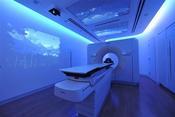Health IT Bringing Slow Gains To Patient Care
Survey finds more work is needed on interoperability, functionality, and satisfaction levels to leverage best practices in case management.

| |
| |
As health delivery organizations grapple with incorporating their workflows into computerized systems, new research shows that health information technology, while making an impact on a variety of medical management interventions, is doing so less quickly than anticipated.
The "2010 Health Information Technology Survey: How Technology Is Changing the Practice of Case Management," report was published last week by TCS Healthcare Technologies in conjunction with the Case Management Society of America and the American Board of Quality Assurance and Utilization Review Physicians.
The report compared results from a 2010 survey against a similar study conducted in 2008. More than 15,000 individuals were interviewed each year via e-mail to gauge trends in care management software applications. The research examines additional applications used by providers, payers, care managers, and others to support care management interventions and patient care.
Among the key findings of the survey were:
-- 69% use multiple health IT systems, while 16% use only one health IT system;
-- 23% of information technology systems are fully integrated and interoperable with other external IT applications;
-- 23% have moved to a completely paperless environment regarding patient or care management records;
-- 54% scan medical records, documents, or communications into their medical management information system;
-- 35% can share clinical data electronically with other providers; and
-- 26% allow providers to access report cards that show physician- and patient-specific compliance with reporting initiatives.
"Despite the slower than expected integration, the survey data indicates progress is occurring," Teri Treiger, president of CMSA, said in a statement. However "trends related to interoperability, functionality, and satisfaction levels indicate more work needs to done to leverage best practices for medical care."
|
|
With regard to health IT's impact on their day-to-day workflow management tasks, a greater number of 2010 respondents reported improvements in several functional capabilities in their respective software applications including the ability to use pre-defined, industry-standard care plans for asthma, diabetes, and other conditions.
Respondents also said there was progress in the automatic generation of care plans based on responses to assessment questions, as well as integration of case management adherence guidelines (CMAGs) to help case managers assess a patient's readiness to change. Health IT also helps to automate and execute follow-up tasks and to predict future medical costs.
However, the report notes that health IT systems have lost ground since 2008 in population stratification applications, which remain an underutilized function in care management software. Furthermore, there is the absence of predominant definitions and standardized methods of tracking outcomes and calculating return on investment within the healthcare industry, especially for care management interventions, the report says.
"Responses to the survey's satisfaction questions indicate challenges remain for mobilizing care management software platforms that satisfy the desires of case managers and other users," Cheri Lattimer, executive director of CMSA, said in a statement. "Only one in five respondents said that care management software helped them to 'spend more time' with patients."
Other results showed that about one in three respondents (36%) report being "very satisfied" or "satisfied" with their respective care management software applications. With regard to electronic medical records (EMRs), almost one out of every two respondents report being "very satisfied" or "satisfied" concerning EMR use in 2010 (45%), up sharply from the 2008 rating (30%).
The report also found that respondents are willing to embrace emerging communication strategies to support patients. A three-fold increase is anticipated in the use of text messaging, smartphone applications, and wireless remote monitoring over the next two years. Use of online personal health records (PHRs), member and patient portals, remote monitoring devices, social networking sites such as Facebook, and blogging and micro-blogging (including Twitter) are predicted to double. Correspondingly, the survey projects decreases in telephone conversations, written letters, and face-to-face contacts by 2012.
About the Author(s)
You May Also Like
How to Amplify DevOps with DevSecOps
May 22, 2024Generative AI: Use Cases and Risks in 2024
May 29, 2024Smart Service Management
June 4, 2024










